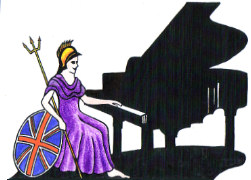Teachers, Accompanists and Piano Entertainers in the UK

UK Piano Page

Unit 60 The Triangle
Wolverton Park
Milton Keynes, Buckinghamshire MK125FJ
England
We are a family run music shop in Wolverton,
121-125 Royal Avenue
Belfast, County Antrim BT1 1FF
Northern Ireland
The Belfast music scene has been quietly turning
7 Berkely Road
Dublin, County Dublin 7
Republic of Ireland
We have pianos for all standards. All pianos
Unit 2
Europa Enterprise Park
Midleton, County Cork
Republic of Ireland
We can supply all makes of new and reconditioned
40 Willsgrove
Cahercalla
Ennis, County Clare
Republic of Ireland
Pianos for Sale
Music Festival for performers and guests Our 10th
18-06-2022 01:30PM
The Morecambe Bay Piano Group was set up to extend
11-12-2021 02:00PM
The Morecambe Bay Piano Group was set up to extend
08-01-2022 02:00PM
The Morecambe Bay Piano Group was set up to extend
12-02-2022 02:00PM
What is Piano Voicing or Toning?
Voicing is an extremely difficult area. It's subjective in the extreme, and has caused endless discussion in piano maintenance circles. But the final goal of voicing is to have the hammers striking the notes of the piano to offer a uniform sound from the bottom to the top of the instrument. Goes without saying that evaluating this capability is governed by the capability of the piano, and the construction of the action parts. But, often a technician will find extremes in voicing, such as a particularly hard hammer, which may result in a note sounding louder than the rest. But, this too can be laid at the door of regulation. This is where the tuner's skill comes into play here. Voicing can be accomplished by pricking the hammer with a set of needles. This pricking changes the structure of the felt, and softens the hammer to a degree.
What is toning?This is the reverse of voicing, and accomplishes the inverse sort of thing. May be necessary to bring up a particularly soft sounding hammer, and bring it into line with its neighbours. This is accomplished by applying a special material to the hammers or ironing with a special tool.